Este mes fue muy emociónate ya que pude marcar dos ciudades peruanas icónicas en mi lista de cosas que quiero hacer antes de morir: Iquitos y Cusco. Como país, Perú es conocido por sus paisajes distintos, desde la costa, selva, sierra y finalmente, el desierto. Mi estancia aquí no habría sido completa sin aventurarme en estos lugares extraordinarios y encantadores.
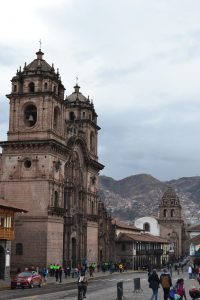
La ciudad de Cusco
Antes de irme a Iquitos, estaba un poco nerviosa porque nunca había ido a una selva tropical y me preguntaba lo que vería allí, a quien encontraría y, sobre todo, ¡con cuantas picaduras de mosquito terminaría! Armada con repelente y crema solar, me dirigí hacia el norte, cambiando la selva urbana de Lima por una experiencia salvaje y autentica. Es seguro decir que me enamoré con el lugar, y además con buenas razones. Mientras estuve allí, visité a un santuario de monos, donde los residentes habían sido rescatados del mercado negro y necesitaban rehabilitación antes de volver a su hábitat natural. Los monos eran afectuosos y lúdicos, incluso tenían distintas personalidades que me pareció fascinante.
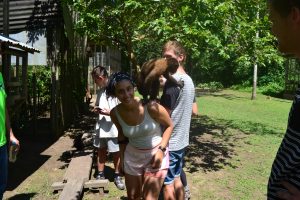
Mono-manía!
Otro hito fue pasar una noche en el corazón profundo de la selva, durmiendo en la tierra suave y escuchando la nana de la naturaleza. Sin embargo, esta noche hubo una lluvia torrencial, ¡lo cual significó que estaba empapada! Esto se compensó el siguiente día cuando pescamos pirañas y las comimos para nuestro desayuno con plátano recién cosechado. Para reflexionar, estoy contenta de que pude visitar una parte del mundo tan única, pero en algunos momentos me encontré notando el impacto que el turismo tuvo en la región. A parte de la contaminación, había algunos centros de visita de animales donde el enfoque era más en la experiencia del turista en lugar del bienestar y las necesidades de los animales. Es muy triste; como seres humanos somos atraídos por la maravilla y el misterio, aunque tenemos que aprender como dejar una menor huella cuando consentimos estos deseos.

Un arco iris en la selva
Poco después, llegó el momento por la visita monumental a Cusco: el corazón del antiguo imperio Inca. Estaba emocionada de poder finalmente visitar a Machu Picchu, una de las maravillas del mundo que había visto repleto en todas las guías turísticas y tarjetas postales tanto dentro como fuera del Perú. Antes de llegar a este famoso lugar emblemático, pase un tiempo explorando a la ciudad de Cusco, que tiene calles empedradas encantadoras y edificios imponentes. Visité también a una cooperativa local de textiles, donde producían productos de alpaca artesanales utilizando procesos tradicionales. Aprendí como usaban tintas naturales de la flora y fauna de la región, por ejemplo, la cochinea que es un parasito que, una vez presionado, secreta un color rojo carmesí. Luego, estuve en el Valle Sagrado, transitando por Maras, famosa por sus salineras, y Moray, un sito arqueológico donde es posible apreciar las terrazas agrícolas desarrolladas por los Incas.

Salineras de Maras
Finalmente era la hora más anticipada del mi viaje, mirando a Machu Picchu por la primera fue más allá de lo que pueda imaginar. La mera magnitud del lugar, la complejidad de los edificios y la imposibilidad de la ubicación encima de una montaña eran captadoras, ¡tuve que pellizcarme para asegurarme de que estaba realmente allí! A lo largo de los años, se han propuesto varias teorías que explican la razón por la cual existe esta ciudad sagrada y me sorprendió aprender que podría haber sido una universidad un lugar donde la nobleza podía aprender y perfeccionar habilidades en agricultura e ingeniería. Me asombró la importancia de los elementos naturales para los Incas; en particular, su adoración de Inti (el Dios del Sol) significó que los edificios y diseño de Machu Picchu eran construidos en armonía con el amanecer, el atardecer y el solsticio como un acto de devoción.
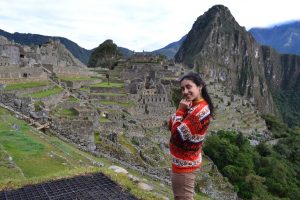
La vista desde Machu Picchu!
Sin duda, este fue un mes especial durante mi intercambio. Estoy agradecida de haber tenido la oportunidad de visitar lugares tan destacables y entender como sus historias han moldeado al Perú moderno de hoy. Por ejemplo, la selva todavía presenta un reto en cuanto a la provisión de acceso a recursos básicos. Estuve anonada por la variedad de paisajes y espero de haberlos capturado para compartir en este blog.
English:
This month was very exciting as I got to check off two iconic Peruvian cities from my Bucket list: Iquitos and Cusco. As a county, Peru is known for its diverse landscapes, which range from coast, jungle, mountain and finally, to desert. My stay here wouldn’t have been complete without venturing to these enchanting and extraordinary locations.
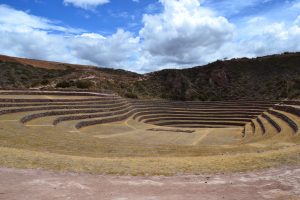
Moray: and archeological wonder
Before heading off to Iquitos I was a little nervous as I’d never been to a tropical jungle before, I wondered what I would see there, who I would meet and most importantly, how many mosquito bites would I end up with! Armed with repellent and lots of sunscreen, I made my way up north, swapping the concrete jungle of Lima for a more wild and authentic experience. It’s safe to say that I fell in love with the place, and with good reason too. Whilst I was there, I visited a monkey sanctuary where the residents have been rescued from the black market and need to be rehabilitated before their release to the wild. The monkeys were affectionate and playful, they even had distinctive personalities which I found fascinating.

With my furry friends
Another highlight was spending the night deep in the heart of the jungle, sleeping on the soft earth and listening to the natural lullaby. Although, that night there was a torrential downpour which meant that I got completely soaked! This was compensated the next day however, as we went fishing for piranhas and ate them for breakfast alongside a freshly picked bunch of plantain. On reflection, I am glad that I got to visit such a unique part of the world, but at times I found myself noticing the clear impact that tourism had on the region. Aside from pollution in the form of litter, there were a couple of animal visiting centres where the focus was more on the tourist experience rather than the wellbeing and needs of the animal. It’s painful to see; as human beings we are drawn in by wonder and mystery, yet we need to learn how to leave less of a footprint when we indulge in these dreams and desires.

Deep in the jungle
Soon after, it was time for the momentous visit to Cusco: the heart of the ancient Inca empire. I was ecstatic to finally visit Machu Picchu, one of the ancient wonders of the world that I had seen plastered on every tourist magazine and fridge magnet, both inside and outside Peru. Before reaching the famous landmark, I spent some time exploring the main town of Cusco which has charming cobble-stoned streets and striking stone buildings. I also visited a local textile collective that hand-produced different products made from alpaca wool using traditional techniques. I learnt how they used natural dyes from the flora and fauna of the surrounding region, for instance the cochineal parasite which releases a crimson red colour when pressed. Next, I spent some time in the Sacred Valley stopping in the towns of Maras, known for its salt production, and Moray, an archaeological site where it’s possible to appreciate the terrace farming technique the Inca’s developed.

Traditional textile techniques
Finally, came the moment of long-awaited anticipation, setting eyes on Machu Picchu for the first time was beyond my imagination. The sheer size of the place, the intricacy of the buildings and the impossible mountain-top location were captivating, I had to pinch myself to make sure I was there! Over the years, there have been many theories as to the what purpose the Sacred city served and I was surprised to learn that it could have been considered as a university, a place where the nobility at the time could learn and perfect skills such as agriculture and engineering. I was amazed by how important the natural elements were for the Inca’s; in particular, their worship of Inti (the Sun God) meant that the buildings and layout of Machu Picchu were constructed to coincide with sunrise, sunset and the solstice as an act of devotion.
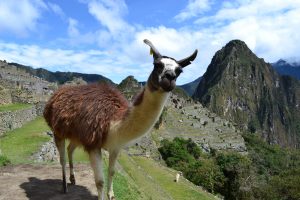
Picture Perfect Postcard
Without a doubt, this was a special month during my exchange here. I am grateful to have had the opportunity to visit such remarkable places and really understand how their history has shaped Peru as a modern nation today. For example, the jungle still presents a major obstacle in terms of providing access to basic resources. I have been blown away by the variety of scenery and hope to have captured some of the wonder to share in this post!

Grateful for the amazing experiences!
